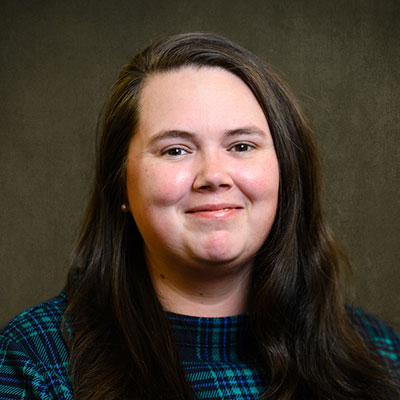


Assistant Professor
Department of Engineering & Science Education
Department of Environmental Engineering & Earth Sciences
Office: 271 Sirrine / 341 Brackett Hall
Phone: (864) 656-9812
Email: klazar@clemson.edu
Former Past Chair - Geoscience Education Division, Geological Society of America
Secretary/Treasurer - Marine & Coastal Geoscience Division, Geological Society of America
Postdoctoral Fellow, Clemson University, 2016-2018
Ph.D., The Ohio State University, 2014, Geological Sciences
M.S., East Carolina University, 2010, Geological Sciences
B.S., North Carolina State University, 2007, Geology
My research primarily focuses on broadening participation in geoscience among post-secondary students. Specific projects underneath this umbrella include 1) investigating best practices for virtual reality in geoscience education to allow students to explore the planet and make geoscience more accessible, 2) leveraging field experiences and the affective domain to increase student interest in geoscience, 3) assessing student alternative conceptions of coastal change, and 4) empowering students to create their own geoscience content and become enthusiastic and effective (geo)science communicators.
Graduate
Undergraduate
Boyd, E.A., Lazar, K.B., and Voigt, M., 2023. Humanizing geoscience education research through participant-driven visual representation, Journal of Geoscience Education, DOI: 10.1080/10899995.2023.2193551.
Boyd, E.A., Lazar, K.B., Moysey, S., 2023. Big data to support geoscience recruitment: Novel adoption of topological data analysis in geoscience education. GSA Bulletin, DOI:10.1130/B36889.1.
Walker, E.B. and Lazar, K.B., 2022. Students as science content creators and evaluators: A case study of video documentary storytelling in science education. Journal of College Science Teaching 52(2): 3-8.
Boyd, E.A. and Lazar, K.B., 2022. "I made the right decision": A case study of student geoscience persistence and involvement surrounding an international field experience. Journal of Geoscience Education, https://doi.org/10.1080/10899995.2022.2036045.
Lazar, K.B. and Moysey, S.M., 2020. Enabling student self-guided field expeditions in geoscience with the GeoXploration Platform for mobile apps. Applied Computing and Geosciences, https://doi.org/10.1016/j.acags.2020.100028.
Dipre, G., Polyak, L., Kuznetsov, A., Oti, E., Ortiz, J., Brachfeld, S., Xuan, C., Lazar, K., and Cook, A., 2018. Plio- Pleisocene sedimentary record from the Northwind Ridge: first insight into paleoclimatic evolution of the western Arctic Ocean for the last >5 Ma. Arktos 4:24 https://doi.org/10.1007/s41063-018-0054-y
Lazar, K.B., Moysey, S.M., Brame, S., Coulson, A., Lee, C., and Wagner, J., 2018. Breaking out of the traditional lecture hall: Geocaching as a tool for experiential learning in large geology service courses. Journal of Geoscience Education DOI:10.1080/10899995.2018.1453191.
Lazar, K. and Moysey, S., 2018. Science communication as a conduit for geoscience engagement in non-major students. In: Earth Educators’ Rendezvous Abstracts, 4th Annual Meeting, Lawrence, KS (July 2018).
Rashid, H., Piper, D.J.W., Lazar, K.B., McDonald, K., and Saint-Ange, F., 2017. The Holocene Labrador Current: changing linkages to atmospheric and oceanographic forcing factors. Paleoceanography DOI: 10.1002/2016PA003051.
Lazar, K. and Moysey, S., 2017. Outdoor experiential learning to increase student interest in geoscience careers. In: American Geophysical Union Abstracts, Annual Meeting, New Orleans, LA (December 2017).
Lazar, K. and Moysey, M., 2017. Integrating geocaching and immersive technologies to encourage greater geoscience exploration and engagement. In: Geological Society of America, Abstracts with Programs, Annual Meeting, Seattle, WA (October 2017).
Lazar, K.B. and Polyak, L., 2016. Pleistocene benthic foraminifers in the Arctic Ocean: implications for sea-ice and circulation history. Marine Micropaleontology 126: 19–30.
Lazar, K.B., Polyak, L., and Dipre, G., 2016. Reexamination of the creation of Cassidulina neoteretis (Foraminifera) and its use as a Pleistocene biostratigraphic marker in the western Arctic Ocean. Journal of Foraminiferal Research 46: 115–123.
Lazar, K.B., Mallinson, D.J., and Culver, S.J., 2016. Foraminifera and Late Quaternary Evolution of the Croatan Beach Ridge Complex, Bogue Sound, and Bogue Banks, NC. Estuarine, Coastal and Shelf Science 174: 49–64.
Polyak, L., Best, K.M., Crawford, K.A., Council, E.A., and St-Onge, G., 2013. Quaternary history of sea ice in the western Arctic Ocean based on foraminifera. Quaternary Science Reviews 79: 145–156.
Rashid, H., Otieno, F.O., Best, K.M., and C. K. Shum, 2013. Analysis of Paleoclimate Records for Understanding the Tropical Hydrologic Cycle in Abrupt Climate Change. Climate Vulnerability: Understanding and Addressing Threats to Essential Resources. Elsevier Inc., Academic Press, 127–139 pp. [ISBN: 9780123847034]